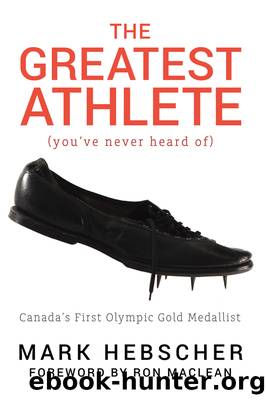The Greatest Athlete (You've Never Heard Of) by Mark Hebscher

Author:Mark Hebscher [Hebscher, Mark; MacLean, Ron]
Language: eng
Format: epub
Publisher: Dundurn
Published: 2019-02-16T00:00:00+00:00
When Title IX was signed into law, it meant that all athletic scholarships offered by schools that received federal funding would have to be split equally along gender lines. The opportunities now available for female athletes would be substantial, and participation in all sports surged dramatically.
The women’s movement owes a debt of gratitude to Ida Schnall for her role as an advocate for female athletics. The Olympics finally allowed women to compete in track and field in the 1928 Games, 16 years after Schnall brought the female athlete’s plight to the public. Today, the Sullivan Award is presented to the top amateur athlete in the United States, as it has been since 1930. However, the ghost of James E. Sullivan continued to cast a shadow on the female athlete. Fourteen years went by until swimmer Ann Curtis, an 18-year-old from San Francisco, became the first female to win the Sullivan Award. Curtis would go on to win two gold medals and one silver at the 1948 London Olympics. Upon her return to San Francisco, she was given a tickertape parade.
Orton was a vigorous defender of women’s rights, especially when it came to athletics. Unlike Sullivan, he encouraged females to be fit and active, to play competitive sports and test themselves against the best. When he was sports director of Philadelphia’s sesquicentennial games in 1926, swimmer Ethel Lackie was one of the main attractions. Lackie was a two-time gold medallist at the 1924 Paris Olympics and the world record holder in the 100-metre freestyle and 100-yard freestyle. “Miss Lackie today is one of the greatest swimmers in the world,” Orton told the Pittsburgh Daily Post in 1926. “Her records show she is better than many men. There is a fine possibility she will soon do the 100 yards freestyle in less than one minute.”15
The world record at the time was 1:03.3, and Orton was pretty good when it came to making predictions, but not quite this time. Lackie never did break a minute, but in 1927 she notched a 1:00.9. That mark lasted seven years before Holland’s Willy den Ouden swam 100 yards in 59.8 seconds in 1934.
It was rare for anyone, especially a man of Orton’s stature, to publicly compare the two sexes when it came to head-to-head competition. It wasn’t until September of 1973, when 29-year-old Billie Jean King beat 55-year-old Bobby Riggs in tennis, that women athletes were looked at differently. The event, which took place at the Houston Astrodome before a worldwide audience of 90 million TV viewers, was dubbed “the Battle of the Sexes II.” Its predecessor, in May of ’73, saw Riggs stomp Margaret Court in straight sets after taunting her and all other female athletes, telling them that men were superior. King’s victory was a seminal moment in the women’s movement.
Early in his career, when women were forbidden to compete in the Olympic Games or other championship events, Orton had studied the great track and field athletes of the day. Since they were all
Download
This site does not store any files on its server. We only index and link to content provided by other sites. Please contact the content providers to delete copyright contents if any and email us, we'll remove relevant links or contents immediately.
| Baseball | Basketball |
| Boxing, Wrestling & MMA | Football |
| Golf | Hockey |
| Soccer |
Imperfect by Sanjay Manjrekar(5804)
Wiseguy by Nicholas Pileggi(5671)
The Body: A Guide for Occupants by Bill Bryson(4974)
Tuesdays with Morrie by Mitch Albom(4688)
Unstoppable by Maria Sharapova(3484)
Not a Diet Book by James Smith(3335)
Crazy Is My Superpower by A.J. Mendez Brooks(3329)
Into Thin Air by Jon Krakauer(3308)
The Mamba Mentality by Kobe Bryant(3189)
The Fight by Norman Mailer(2848)
Finding Gobi by Dion Leonard(2781)
Tuesdays With Morrie by Mitch Albom(2694)
The Ogre by Doug Scott(2631)
My Turn by Johan Cruyff(2575)
Unstoppable: My Life So Far by Maria Sharapova(2452)
Accepted by Pat Patterson(2302)
Everest the Cruel Way by Joe Tasker(2278)
Borders by unknow(2227)
The Quarterback Whisperer by Bruce Arians(2218)
